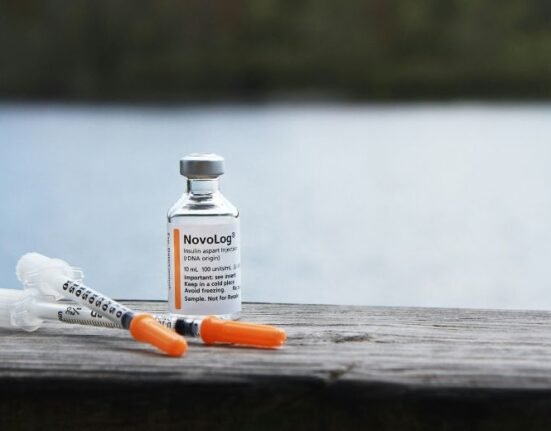HQ Team
November 14, 2024: The global diabetic population has risen fourfold to 828 million during the last three decades, with more than a quarter living in India, according to an analysis published in The Lancet.
From 1990 to 2022, global diabetes rates doubled in both men (6.8% in 1990 to 14.3% in 2022) and women (6.9% to 13.9%).
When the impact of population growth and ageing is added, it amounts to an estimated 828 million adults with diabetes in 2022 — an increase of about 630 million people from 1990, when roughly 198 million adults were estimated to have the disease.
About 445 million adults aged 30 years and older with diabetes, or 59%, did not receive treatment in 2022, three and a half times the number in 1990.
India was the top diabetic country in 2022, with 212 million people suffering from the disease, followed by China (148 million), Pakistan (36 million), Indonesia (25 million), and Brazil (22 million).
The study could not separate type 1 and type 2 diabetes in adults. However, previous evidence suggests that the vast majority of cases of diabetes in adults are type 2.
It is the first global analysis of trends in both diabetes rates and treatment, which includes all countries.
Low-income nations
“Our study highlights widening global inequalities in diabetes, with treatment rates stagnating in many low- and middle-income countries where numbers of adults with diabetes are drastically increasing,” said senior author Professor Majid Ezzati of Imperial College London.
“This is especially concerning as people with diabetes tend to be younger in low-income countries and, in the absence of effective treatment, are at risk of life-long complications – including amputation, heart disease, kidney damage or vision loss – or in some cases, premature death.”
The study was conducted by the NCD Risk Factor Collaboration (NCD-RisC), in collaboration with the World Health Organization (WHO). Researchers used data from over 140 million people aged 18 years or older from more than 1,000 studies in populations of different countries.
The authors used statistical tools to bring all the data across different years, ages and countries together, and estimate diabetes rates and treatment in a way that enables comparisons across countries.
HbA1c 6.5%
Diabetes is defined as having a fasting plasma glucose (FPG) of 7.0 mmol/L or higher, having glycated haemoglobin (HbA1c) of 6.5% or higher (two commonly used diagnostic criteria options for diabetes according to modern guidelines) or taking medication for diabetes.
Treatment is defined as taking medication for diabetes.
Diabetes rates across regions
The changes in diabetes rate from 1990 to 2022 varied drastically across different countries, with mostly low-middle-income countries experiencing the largest increases. The diabetes rate amongst women in Pakistan rose from 9.0% in 1990 to 30.9% in 2022 — the largest increase across all countries.
Some higher-income countries, such as Japan, and Canada and some countries in Western Europe (France, Spain and Denmark), saw no change or even a small decrease in diabetes rate over the last three decades.
Among high-income industrialised nations, diabetes rates in 2022 were highest in the US, with 11.4% in women and 13.6% in men.
The major factors for the rise in type 2 diabetes rates and its variation across countries are obesity and poor diets.
“Given the disabling and potentially fatal consequences of diabetes, preventing diabetes through healthy diet and exercise is essential for better health throughout the world,” said Dr Ranjit Mohan Anjana, Madras Diabetes Research Foundation, India.
The findings highlight the need to see more ambitious policies, especially in lower-income regions of the world, to restrict unhealthy foods and make healthy foods affordable, she said.
Subsidy for healthy foods
Measures such as subsidies for healthy foods and free healthy school meals “as well as promoting safe places for walking and exercising including free entrance to public parks and fitness centres” must be implemented, Dr Anjana said.
Three out of five (59%) of adults aged 30 years and older with diabetes, a total of 445 million, were not receiving medication for diabetes in 2022, three and half times the number in 1990 (129 million).
The gap between the countries with the highest and lowest treatment coverage for diabetes has widened from 1990 to 2022; from 56 to 78 percentage points in women and from 43 to 71 percentage points in men.
“In 2022, only 5-10% of adults with diabetes in some sub-Saharan African countries received diabetes treatment, leaving a huge number at risk of serious health complications,” said Professor Jean Claude Mbanya, University of Yaoundé 1, Cameroon.
“Most people with untreated diabetes will not have received a diagnosis, therefore increasing detection of diabetes must be an urgent priority in countries with low levels of treatment,” he said.
In 2022, almost one-third (133 million, 30%) of the 445 million adults aged 30 years or older with untreated diabetes lived in India, more than 50% greater than the next largest number which was in China (78 million).








